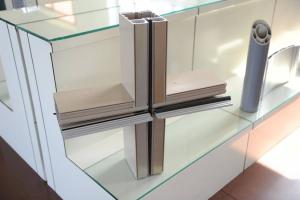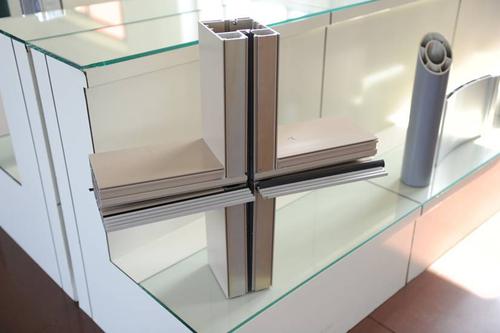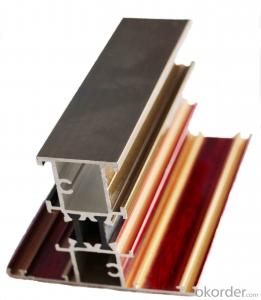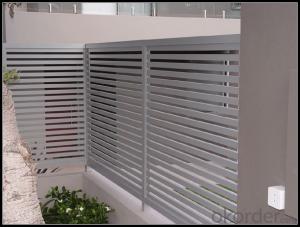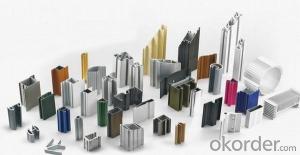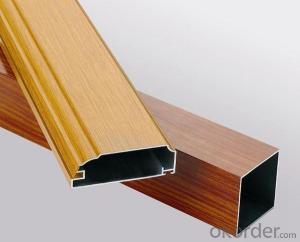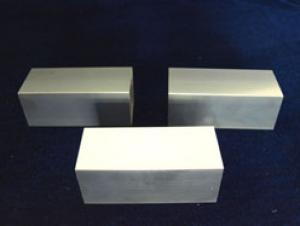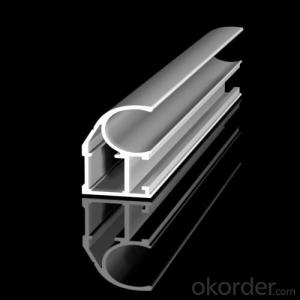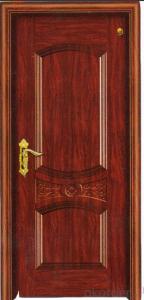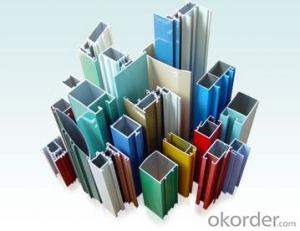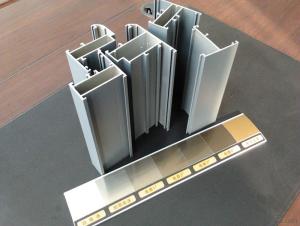Wholesale Anodized Aluminum Profiles for Window and Door
- Loading Port:
- China Main Port
- Payment Terms:
- TT OR LC
- Min Order Qty:
- -
- Supply Capability:
- -
OKorder Service Pledge
OKorder Financial Service
You Might Also Like
Specification:
1. Alu Alloy: 6063, 6061, 6005
2. State: T5/T6
3. Length: 1m-7m
4. Normal Anodizing thickness: 8-12 micro
5. Normal powder coating thickness: 80-120 micro
6. Tensile strength: ≥ 160 mpa
7. Yield strength: ≥ 110 mpa
8. Extensibility: ≥ 8%
9. Hardness(HW):8-14HW
Packing:
EPE Fram, Shrink film, Composite paper + Kraft paper
Aluminum profile application:
1. Industrial profiles;
2. Decoration/Furniture profiles;
3.Construction/Building profiles,Aluminum Pipes and tubes;
4. Door&Window profiles;
5. Curtain Wall profiles;
6. Aluminum Heat Sink;
7. Aluminum Angle/Channels;
8. LED panel etc.
Strong resistance corrosion property, effectively prevent acid, alkali, and salt etc.
Smooth and subtle, vivid, bright, and magnificent appearance
Alloy: 6063
Finish: anodizing, electrophoretic coating, powder coating, wood effect etc according to customers’ need
Standard package: suitable for long ocean transporting
OEM&ODM is welcome
Last for life time
- Q: Knowledge of aluminum profile warehouse management (detail)
- Warehouse management is the main task required under the factories and production equipment condition of overall planning, rational layout; to strengthen the internal economic responsibility system, scientific division, forming material export management guarantee system; business must implement the work quality standardization, application of modern management technology and the ABC classification method, and constantly improve the level of warehouse management. The main work is material inspection, income, inventory, storage and custody of materials, materials delivery, billing statements, etc.
- Q: This question asks for methods to protect aluminum profiles from water damage during the installation and usage phases.
- <p>To prevent water damage to aluminum profiles during installation or use, follow these steps: 1. Ensure the aluminum profiles are properly sealed with a high-quality sealant to prevent water penetration. 2. Use corrosion-resistant fasteners and hardware to avoid rusting. 3. Install drainage systems to direct water away from the profiles. 4. Regularly inspect and maintain the profiles to identify and repair any damage promptly. 5. Avoid installing profiles in areas with high humidity or direct exposure to rain. 6. Use protective coatings or paints that are water-resistant and compatible with aluminum. 7. Keep the profiles clean and free from dirt or debris that can trap moisture. By following these precautions, you can significantly reduce the risk of water damage to aluminum profiles.</p>
- Q: Is it feasible to recycle aluminum profiles economically and in significant quantities?
- <p>Yes, aluminum profiles can be recycled at a reasonable cost and volume. Recycling aluminum is more cost-effective than mining and refining new aluminum from bauxite. The process requires less energy, which reduces costs. Additionally, aluminum has a high recycling rate, with about 75% of all aluminum ever produced still in use today. This indicates that aluminum recycling is both economically viable and can be done in significant volumes, contributing to sustainability and waste reduction.</p>
- Q: What are the advantages of using aluminum profiles in the oil and gas industry?
- There are several advantages of using aluminum profiles in the oil and gas industry. Firstly, aluminum profiles are lightweight yet highly durable, making them ideal for applications that require strength and resistance to harsh environments. Secondly, aluminum profiles have excellent corrosion resistance properties, ensuring their longevity even in corrosive environments found in the oil and gas industry. Additionally, aluminum profiles offer excellent thermal conductivity, allowing for efficient heat transfer and management in various oil and gas processes. Furthermore, aluminum profiles are easy to fabricate and assemble, enabling quick and cost-effective installation. Lastly, aluminum is a recyclable material, aligning with sustainability goals and reducing environmental impact in the oil and gas industry.
- Q: This question asks for an overview of the various types of fasteners that can be used in conjunction with aluminum profiles.
- <p>Aluminum profiles are commonly used in construction and manufacturing, and they require fasteners for assembly. The different types of fasteners include: 1. T-nuts and T-bolts: These are used for creating strong connections within the profile. 2. Clamping blocks: These are used to secure profiles together without the need for drilling. 3. Corner brackets: These are used to create 90-degree connections between profiles. 4. Angle brackets: Similar to corner brackets but for creating angled connections. 5. End caps: These are used to cover the ends of profiles for a finished look. 6. Dowels: These are used for aligning and joining profiles together. 7. Screws and bolts: These are used for securing components to the profiles. Each type of fastener serves a specific purpose and is chosen based on the particular application and design requirements.</p>
- Q: Can aluminum profiles be used for agricultural or farming applications?
- Yes, aluminum profiles can indeed be used for agricultural or farming applications. Aluminum profiles offer several advantages that make them suitable for these applications. Firstly, aluminum is lightweight, which makes it easy to transport and install. This is particularly beneficial in agricultural settings where mobility and flexibility are essential. Additionally, aluminum is highly resistant to corrosion, making it ideal for use in harsh environments such as farms where exposure to moisture, chemicals, and fertilizers is common. Its resistance to rust ensures durability and longevity, reducing the need for frequent replacements. Furthermore, aluminum profiles can be easily customized and fabricated to meet specific requirements. This flexibility allows for the creation of structures like greenhouse frames, support beams, shelving systems, and other components needed in agricultural operations. Moreover, aluminum profiles are non-toxic and do not release any harmful substances into the surrounding environment. This makes them safe for use in farming applications, where the health and well-being of animals and crops are of utmost importance. Lastly, aluminum is a sustainable material that can be recycled indefinitely, reducing its environmental impact. This aligns with the growing focus on sustainability in agriculture. In conclusion, due to their lightweight nature, corrosion resistance, adaptability, safety, and sustainability, aluminum profiles are indeed suitable for various agricultural and farming applications.
- Q: This question asks for a method to calculate the quantity of aluminum profiles required for a construction project.
- <p>To calculate the amount of aluminum profiles needed for your building project, first, measure the dimensions of the area where the profiles will be used. Determine the length and width of each profile required. Multiply these dimensions by the number of profiles needed for each section of the project. Add up the totals for all sections to get the overall quantity. Consider the type of profile and its application, as this will affect the quantity and specification. Factor in a small percentage for waste and cutting errors. For complex projects, consult with an engineer or use specialized software to ensure accuracy.</p>
- Q: This question asks about the various thicknesses and grades of aluminum profiles that are specifically used for roofing purposes.
- <p>Aluminum profiles for roofing come in different thicknesses and grades, which determine their strength and suitability for various applications. Common thicknesses range from 0.5mm to 1.5mm, with 0.5mm and 0.6mm being the most common for residential roofing. For commercial and industrial applications, thicknesses of 0.8mm to 1.5mm are often used due to their increased load-bearing capacity. Grades of aluminum profiles are typically classified based on their alloy composition, with 1100, 3003, 5005, and 6061 being the most common. Each grade has different properties, such as corrosion resistance, formability, and strength, which make them suitable for specific roofing applications. For instance, 3003-grade aluminum is widely used for roofing due to its good formability and moderate strength. The choice of thickness and grade depends on the specific requirements of the roofing project, such as the expected load, environmental conditions, and aesthetic preferences.</p>
- Q: Are aluminum profiles suitable for exterior cladding systems that need to withstand fire?
- <p>Yes, aluminum profiles can be used for exterior cladding systems that require fire resistance. Aluminum is a non-combustible material, which means it does not support combustion. However, it's important to note that while aluminum itself doesn't burn, it can melt at high temperatures. To enhance fire resistance, aluminum profiles can be coated with intumescent paint or used with fire-resistant materials in the cladding system. These measures can help to slow the spread of fire and protect the structure. Always ensure compliance with local building codes and fire safety regulations when selecting materials for fire-resistant applications.</p>
- Q: Are aluminum profiles suitable for use in mining and construction equipment?
- Yes, aluminum profiles are suitable for use in mining and construction equipment. Aluminum offers a unique set of properties that make it highly suitable for these industries. Firstly, aluminum is lightweight, which helps in reducing the overall weight of the equipment, making it easier to transport and maneuver on construction sites or in mining operations. This lightweight nature also allows for increased fuel efficiency, reducing operational costs. Additionally, aluminum profiles have excellent corrosion resistance, which is crucial in these industries where equipment may be exposed to harsh weather conditions or corrosive substances. This resistance to corrosion ensures that the equipment remains durable and long-lasting, even in challenging environments. Furthermore, aluminum profiles can be easily fabricated and customized to suit specific requirements. This flexibility in design allows for the creation of complex shapes and structures, enabling the construction of equipment with optimal strength and functionality. Moreover, aluminum profiles have high thermal conductivity, which effectively dissipates heat generated during mining and construction operations. This property is essential in preventing overheating or damage to the equipment and ensures efficient performance even in intense working conditions. Overall, the combination of lightweight, corrosion resistance, versatility, and thermal conductivity makes aluminum profiles a suitable choice for use in mining and construction equipment.
Send your message to us
Wholesale Anodized Aluminum Profiles for Window and Door
- Loading Port:
- China Main Port
- Payment Terms:
- TT OR LC
- Min Order Qty:
- -
- Supply Capability:
- -
OKorder Service Pledge
OKorder Financial Service
Similar products
Hot products
Hot Searches
Related keywords
